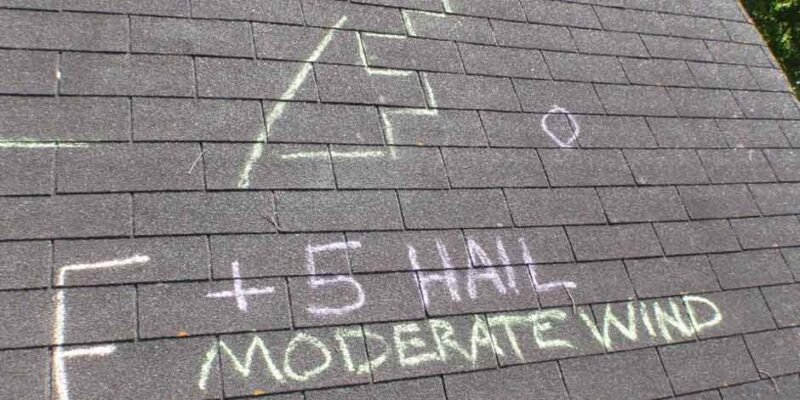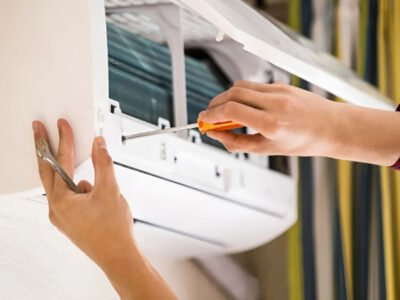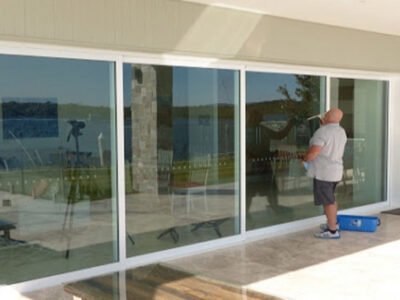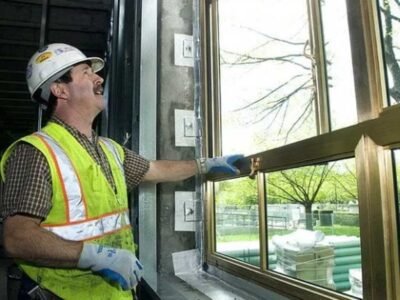Are you suspicious about what to do after a hail storm? Can hailstorms damage the roofs of our houses? Then the answer is “Yes”.
Hail damage can be a homeowner’s worst nightmare. Those tiny ice pellets might seem harmless at first glance. But when they come hurtling from the sky at high speeds, they can show a vulnerable impact on your roof. Everybody knows that roofs are the most important part of our homes, so dealing with roof damage due to hail or storms might be stressful.
That is why it is crucial to understand when to replace your roof after hail damage and is important to maintain the integrity of the home. However, this guide will delve into the best time to replace the roof, signs of hail damage, and the steps to take immediately after a hailstorm.
Top 5 Signs That Indicate To Replace Roof After Hail Damage
Hail damage can be more than just a minor inconvenience; it can compromise the integrity of your home. Once you identify the hail damage early, it can save you from more extensive repairs down the road. Here are some key indicators that your roof might have been compromised;
-
Visible shingle damage
Hail can leave shingles looking like they have been through a war zone. If you see dents, cracks, or missing pieces on your shingles, it is the time to act. Keep in mind that damaged shingles can no longer protect your home; they will cause leaks or further structural damage. Don’t wait until you see water dripping from your ceiling; by then, the damage could be extensive and costly.
-
Granule loss
Granules are the tiny, sand-like particles that coat asphalt shingles. These granules protect your shingles from UV rays and provide fire resistance. After a hailstorm, you might notice an excessive amount of these granules in your gutters or on the ground. If your shingles are missing a significant amount of granules, they’re more susceptible to future weather damage, and it’s a clear sign that a roof replacement might be necessary.
-
Dented gutters and downspouts
Take a look at your gutters and downspouts. Hail often leaves them dented or dinged, which can indicate the extent of the hail damage on your roof. This is particularly important because your gutters play a crucial role in directing water away from your home. Compromised gutters can lead to water pooling around your foundation, causing even more damage.
-
Soft or spongy softs on the roof
Walking on your roof should feel solid and firm. If you notice any soft or spongy spots, it’s a red flag. These areas can indicate water damage underneath the shingles, often a result of hail impact. This not only affects the roof’s durability but also its safety. A spongy roof is a weakened roof, and it’s time to call in a professional to assess the extent of the hail damage.
-
Mold or Mildew Growth
Mold and mildew are not just unsightly; they’re also a health hazard. If you spot mold or mildew growing on your roof or in your attic, it can be a sign of moisture intrusion due to hail damage. Addressing mold and mildew requires more than just cleaning; you need to fix the source of the moisture, which often means replacing a damaged roof.
What Is The Best Time To Replace Your Roof?
The best time to replace your roof after hail damage is immediately after the storm. Ideally, aim for spring or fall to take advantage of favorable weather conditions. Timely roof replacement is crucial to prevent further damage, protect your home, and ensure the work is done under optimal conditions.
-
Spring and Fall
These seasons are generally the best times for roof replacement. The weather is usually mild, which provides optimal conditions for roofing work.
-
Avoid Peak Seasons
Summer can be very hot, which may impact the comfort and efficiency of roofing crews. Winter, on the other hand, can present challenges like snow, ice, and cold temperatures, which can affect the quality of the roofing work and materials.
-
Check Contractor Availability
After a major hailstorm, contractors might be in high demand. Schedule an inspection and potential replacement early to avoid long wait times.
9 Tips To Protect Your Roof from Hail Damage
- Regular maintenance and timely repairs keep your roof in top condition.
- Opt for hail-resistant shingles
- Try to maintain your rood and keep it away from debris for proper drainage
- Install roof guards
- Fix any loose or damaged shingle promptly
- Be cautious when hail is predicted
- Use temporary roof covering to protect your roof in imminent severe weather
- Must trim overhanging branches
- Get in touch with professional roof replacement contractors after hail damage.
Get In Touch With A Reputable Roofing Contractor
When it comes to addressing hail damage, choosing MidSouth Construction is the perfect choice for ensuring your home is protected and restored with the utmost professionalism. We have years of experience in offering hail damage services. With a reputation built on excellence, we hire a dedicated team of certified roofing experts to handle your repairs and replacements efficiently and effectively. From inspection to detailed estimates to high-quality materials, we offer all-rounder services.
Trust MidSouth Construction to safeguard your home and enhance its value, making it the premier choice for all your roofing needs after hail damage.

Wrapping Up
Neglecting hail damage to your roof is not just a matter of minor inconvenience; it can lead to severe structural issues and financial burdens. Prompt inspection and repair by a qualified roofing contractor can prevent these problems and ensure the long-term safety and integrity of your home.
Remember, when in doubt, call a professional. A small investment in maintenance today can save you a lot of money and stress in the future. Stay vigilant, stay safe, and keep your roof in prime condition to weather any storm that comes your way. So, act swiftly after a hailstorm to ensure your home remains safe, secure, and in top condition.















Comments